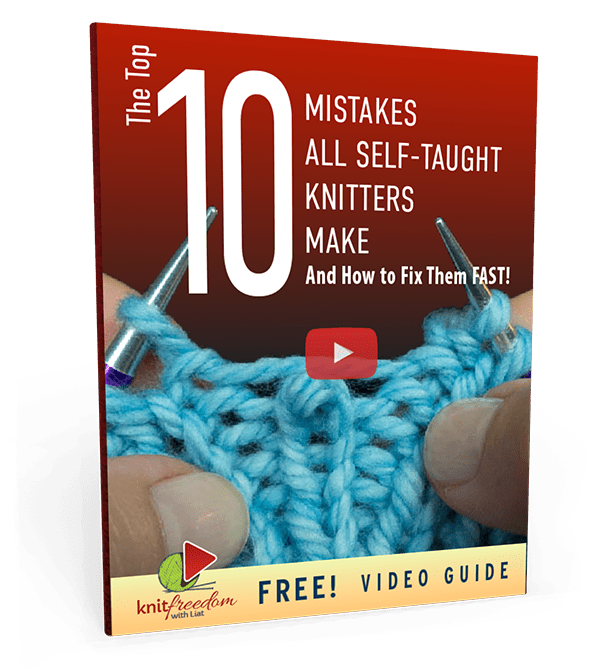Advanced Toe-Up Socks
Toe-Up Sock Patterns In Other Weights And Sizes
Now that you understand how simple it is to construct a pair of toe-up socks, why not make tons of them? Here are links to download my other toe-up socks patterns for you to try.
- Fingering-Weight Toe-Up Socks for Adults
- Bulky-Weight Toe-Up Slipper Socks for Adults
- Super-Bulky-Weight Toe-Up House Socks for Adults
- Aran-Weight 2-Hour Toe-Up Socks for Newborns
Experimenting With Textured Stitches in Toe-Up Socks
It’s easy to add texture elements, like cables or lace, to these basic patterns.
Look through your favorite stitch dictionary and find a stitch pattern with a repeat number that fits exactly or almost exactly into the number of stitches called for in the cuff of the pattern.
In a repeating pattern, the section that is repeated is usually between 4 and 12 stitches wide, and most will ft into the number of stitches you need for the sock cuff.
The Fingering-Weight Toe-Up Sock for Adults calls for 56 stitches around the cuff for a medium, or 28 stitches on each needle.
Find a cable pattern that is 4 or 7 stitches wide, and work it along the top of the foot, knitting the sole of the foot in Stockinette stitch, and then work the cables around the entire cuff. Voila! New pattern, designed by you.
Just remember, lace tends to be more stretchy than Stockinette stitch, while cables tend to be less stretchy. Plan accordingly.
Basic Fleegle Heel Toe-Up Sock Formula
There are many sock patterns available in books and on the Internet, and many more variations you can make using the techniques above.
But let’s say you want to design your own basic toe-up sock pattern like the one you learned here, with any yarn or needles you have. The formula is really easy – I must give credit to Fleegle, who published this easy formula for us all to enjoy.
I describe it to you in my own words here.
❤️ How to Knit Basic Fleegle-Heel Toe-Up Socks ❤️
Toe-Up Cast-On
Using a size needle that is appropriate to your yarn weight (suggested on the yarn label), and using Judy’s Magic Cast-On, cast on about an inch and a quarter of stitches.
Increase For Toe
Increase just like we did for our project, stopping when the sock is as wide as your foot at the “ring” (fourth) toe.You don’t want to increase until the sock is as wide as your whole foot, because then it will sag and fall off. No fun.
Count the stitches on your sock – you will use this stitch count when we get to the heel.
Knit Foot, Increase For Heel
Work even until the sock reaches the front of your ankle. Increase on the heel needle just like we did for our worsted-weight sock, stopping when you have, on the heel needle, two less than the total number of sock stitches you had for the foot.
Turn Heel
Placing a marker at the midpoint of your heel stitches, knit to 2 sts beyond the marker.
Decrease, K1, then turn and purl back to 2 sts beyond the marker.
Decrease, P1, and turn. You may remove the marker.
Continue turning the heel by working up to the gap, as I showed you in the tutorial: decreasing, working 1 more, and then turning your work.
You are done turning the heel when your K1 after the decrease is the last stitch on the needle.
Working exactly like we did on our project, knit once across the instep and do a final decrease on the right-hand side of the heel. You should be back to your original number of stitches.
Work Cuff And Ribbing
Knit even for the cuff as long as you like. If you want to make long-cuffed socks strong or knee socks, try the socks on the after you have knitted 8 inches – you may need to increase one stitch on either side of the sock. Try on again after knitting another inch or two and increase as needed.
If you are making knee socks, do at least 1.5-2 inches of ribbing, decreasing at the very top to adjust for the leg getting narrower at the top of the calf.
Bind Off Invisibly, Weave, And Block
Bind off using the invisible ribbed bind-off, weave in your ends, block your socks, and you’re done. This is the formula that I’ve followed for all my toe-up sock patterns, so you should feel comfortable with it once you’ve knitted the socks along with me.

